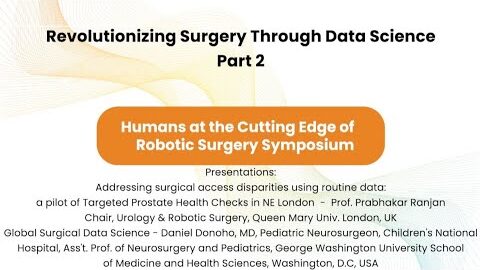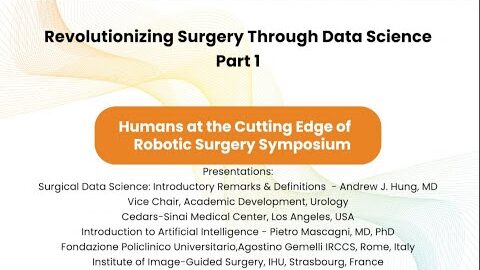#233 Robotic Transduodenal Ampullectomy- Dr. Philipp Seeger
This is one of the 2023 KS International Innovation Awards videos selected for inclusion in the Vattikuti Foundation – ORSI Humans at the Cutting Edge of Robotic Surgery Conference, October 6, 7 & 8, 2023 in Ghent, Belgium. Posting does not imply that is has been selected as a Finalist, just that the content will be discussed at the Conference.
From the entry: Robotic Transduodenal Ampullectomy- Dr. Philipp Seeger
Vatikuti foundation
KS International Innovation awards 2023
Martinistraße 52 20251 Hamburg Germany Robotic transduodenal Ampullectomy of an ampullary Adenoma
PD Dr. med. Felix Nickel f.nickel@uke.de
PD Dr. med. Asmus Heumann a.heumann@uke.de
Dr. med. Philipp Seeger p.seeger@uke.de
In this video, we present the robotic transduodenal resection of an ampullary adenoma in a 54 year old female patient. Written patient consent was obtainend. The procedure was done in March 2023 at the Department for General, Visceral and Thoracic Surgery at the University Medical Center Hamburg-Eppendorf. Ampullary adenomas are rare with an incidence of 0,5 % in 100.000 [1]. Because they follow the same adenoma-carcinoma sequence as colorectal cancer, complete resection is the treatment of choice [2]. This can be achieved by endoscopic ablation of the papilla (superficial resection plane) or surgical excision of the ampulla (resection up to the muscular duodenal layer). Before the advent of robotic surgery, the minimally invasive advantage of the endoscopic approach has compensated disadvantages like a lower R0 rate and higher risk of bleeding [3,4]. Since the laparoscopic approach of transduodenal resection did not prove feasibility because auf the intricate anatomy, robotic ampullectomy has the potential to combine the advantages (minimally invasive, high R0-rate) of both endoscopic and open surgical resection.
In our case, an exact and controlled resection of the adenoma including intraductal parts could be achieved with a DaVinci Xi robot. Identification of the papilla was straightforward with intraoperative ultrasound. Reconstruction with orthotopic re-insertion of pancreatic and bile duct were successful with no pancreatic or bile fistula. Histologic findings revealed no malignancy and R0 adenoma resection. The patient was discharged on the 6th postoperative day and has since then fully recovered.
[1] Albores-Saavedra J, Schwartz AM, Batich K, Henson DE. Cancers of the ampulla of vater: demographics, morphology, and survival based on 5,625 cases from the SEER program. J Surg Oncol. 2009 Dec 1;100(7):598-605. doi: 10.1002/jso.21374.
[2] Stolte M, Pscherer C. Adenoma-carcinoma sequence in the papilla of Vater. Scand J Gastroenterol. 1996 Apr;31(4):376-82. doi: 10.3109/00365529609006414.
[3] Hernandez LV, Catalano MF. Endoscopic papillectomy. Curr Opin Gastroenterol. 2008 Sep;24(5):617-22. doi: 10.1097/MOG.0b013e3283088e12.
[4] Nappo G, Gentile D, Galvanin J, Capretti G, Ridolfi C, Petitti T, Spaggiari P, Carrara S, Gavazzi F, Repici A, Zerbi A. Trans-duodenal ampullectomy for ampullary neoplasms: early and long-term outcomes in 36 consecutive patients. Surg Endosc. 2020 Oct;34(10):4358- 4368. doi: 10.1007/s00464-019-07206-x
See more at: https://vattikutifoundation.com/videos/
Date
August 15, 2020






